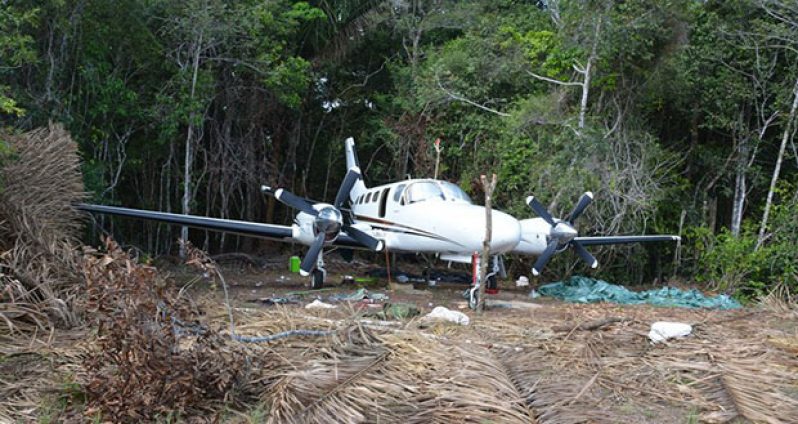THE need to secure Guyana’s airspace is even more evident in wake of a recent aircraft find that has left investigators baffled as to the facts and players attached to the vessel. Without the knowledge of aviation personnel, a twin-engine Cessna aircraft entered Guyana’s airspace and quietly landed at the Yupukari Airstrip, Region Nine (Upper Takutu/Upper Essequibo) because of the country’s limited ability to track movement in its airspace.Director–General of the Guyana Civil Aviation Authority (GCAA) retired Lieutenant Colonel Egbert Fields told the Guyana Chronicle that improved security of the country’s airspace was expected by the first quarter of next year.
Fields, a former army pilot and seasoned aviator noted that currently, Guyana’s eyes and ears in the sky are highly dependent on radio communication. To manage air traffic and monitor movement in the country’s airspace, the standard procedure was that pilots and aircraft operators were required to radio in at particular check- points or boundaries and before they attempt to land at locations, particularly in the hinterland regions.
However, GCAA is working feverishly to extend the operations of the Automatic Dependent Surveillance-Broadcast system (ADS-B) which was introduced in 2014 and incorporated within the local air traffic control system.
“By the first quarter we should have good coverage to see (track) aircraft all the way down to Port Kaituma and Annai,” Fields said. He pointed out that the Authority was presently working with a short- range scope and the extension of the system depended on the antennas that were being put up in various locations. Agencies such as Digicel and E-Networks are helping to facilitate the process.
Fields explained that ADS-B allows for tracking of aircraft travelling at high or low altitudes and can also be picked up depending on the system’s reach. “This (ADS-B) system is very important,” Fields explained. He confirmed that it could help track downed aircraft and save lives once the corresponding equipment was onboard. “But it also helps to improve the management of air traffic and locate where they (aircraft) are for better management of the airspace.”
With the country’s rising oil sector, investment prospects and extended runway at our largest airport, Fields agreed that air traffic was expected to have a massive increase and Guyana had to prepare itself.
Under the last GCAA head, Zulphicar Mohamed, ADS-B was described as a US$500,000 surveillance system reaching tracking heights of some 24,000 feet. The system facilitates sharing of information between ground stations and aircraft since it reports the activities taking place in the pilot’s environment and records for ATCs the location of an aircraft, its speed and altitude.
Guyana has been known as a connecting hub for drug traffickers and for the movement of other cross-border contraband leaving South America for northern states. Investigators are therefore examining whether the abandoned Cessna which entered Guyana untracked was involved in illegal activities.
Prior to this aircraft being found, in 2014 a Self-Propelled Semi-Submersible (SPSS) vessel (submarine) was found in the North West District in the country’s interior, believed to be used for ferrying drugs across the Atlantic Ocean.



.jpg)








